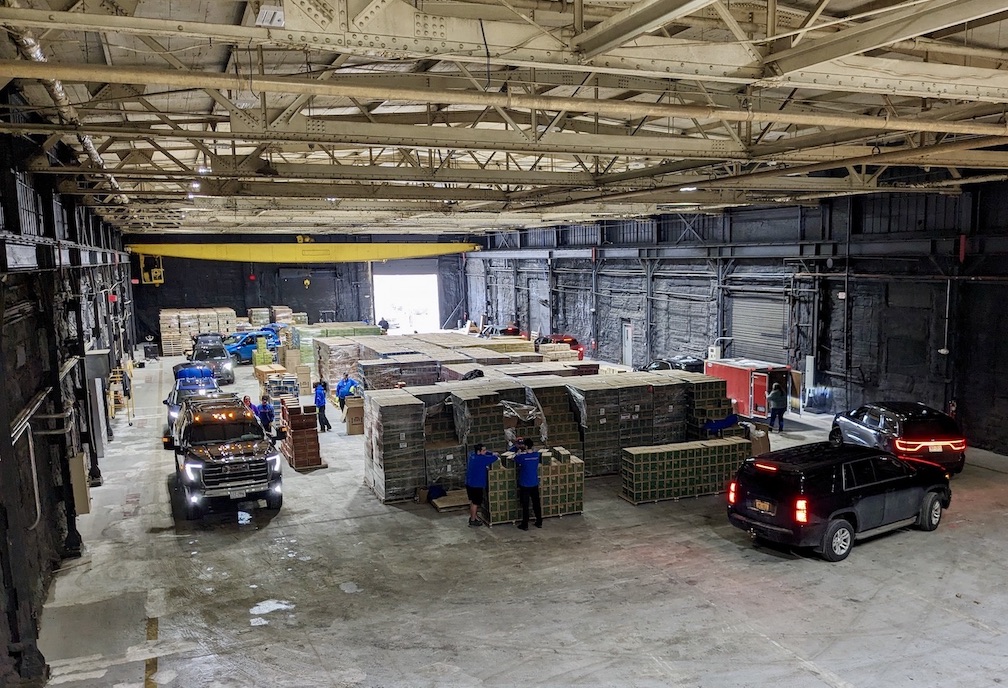Featured News - Current News - Archived News - News Categories
Facilities in New York, New Jersey, Puerto Rico & US Virgin Islands continue to reduce releases of toxic chemicals
On Wednesday, the U.S. Environmental Protection Agency (EPA) released its 2019 Toxics Release Inventory (TRI) National Analysis, which shows that EPA and companies that manage chemicals continue to make progress in preventing pollution. The report shows continued toxic chemical reductions in Region 2 and that between 2018 and 2019 total releases of TRI chemicals nationwide decreased by 9%.
Clear and consistent TRI data encourages accountability and innovation from our regulated facilities,” EPA Regional Administrator Pete Lopez said. “Year-after-year, facilities in Region 2 pursue source reduction opportunities and implement preferred waste management activities to minimize their chemical releases and disposal thanks to the data in the TRI National Analysis. This transparency and collaborative use of knowledge helps to improve economic growth and environmental quality for everyone.”
For the first time in five years, industrial and federal facilities reported an increased number of new source reduction activities that aim to reduce or eliminate the amount of chemical-containing waste facilities create. Facilities also avoided releasing 89% of the chemical-containing waste they created and managed during 2019 into the environment by using preferred practices such as recycling, treatment, and energy recovery.
In 2019, 95% of the TRI chemical waste managed at facilities in Region 2 was not released into the environment and was instead managed using preferred practices such as recycling, energy recovery, and treatment. This is 6% higher than the national average. Facilities in the region reported releasing 39.3 million pounds of TRI chemicals, a slight (< 1%) decrease from 2018. From 2007 to 2019, releases in Region 2 decreased by 22.4 million pounds (36%), driven by reduced releases from electric utilities. For 2019, 9% of Region 2 facilities reported implementing new source reduction activities. Among the sectors with the highest source reduction reporting rates was the miscellaneous manufacturing sector, in which 14% of facilities reported initiating these activities.
The 2019 TRI National Analysis released today reflects TRI chemical waste management activities, including releases, that occurred during calendar year 2019 and therefore does not indicate any potential impacts of the COVID-19 public health emergency that began in the U.S. in early 2020. Due to the significant analysis of reported information, this summary and interpretation of the most recent TRI data is released approximately six months after the reporting deadline.
A new Spanish TRI website, as well as a Spanish version of the 2019 analysis, will be available by the end of January. Spanish-speaking communities across the U.S. will be able to use this resource to learn about TRI chemical releases in their communities – expanding their access to environmental information and making TRI data more easily accessible.
Background
Thanks to the passage of the Emergency Planning and Community Right-to-Know Act of 1986 which helped create EPA’s Toxics Release Inventory program, Americans now have greater awareness of how chemicals are being managed in their communities. Today, nearly 22,000 facilities report annually on the use and quantities of more than 760 chemicals they release to the environment or otherwise manage as waste to the Toxics Release Inventory (TRI) program. EPA, states and tribes receive TRI data from facilities in industry sectors such as manufacturing, mining, electric utilities, and commercial hazardous waste management. The Pollution Prevention Act also requires facilities to submit information on pollution prevention and other waste management activities of TRI chemicals.
To access the 2019 TRI National Analysis, including local data and analyses, visit www.epa.gov/trinationalanalysis. Information on facility efforts to reduce TRI chemical releases is available at www.epa.gov/tri/p2. Follow EPA Region 2 on Twitter at http://twitter.com/eparegion2 or visit its Facebook page, http://facebook.com/eparegion2.





























